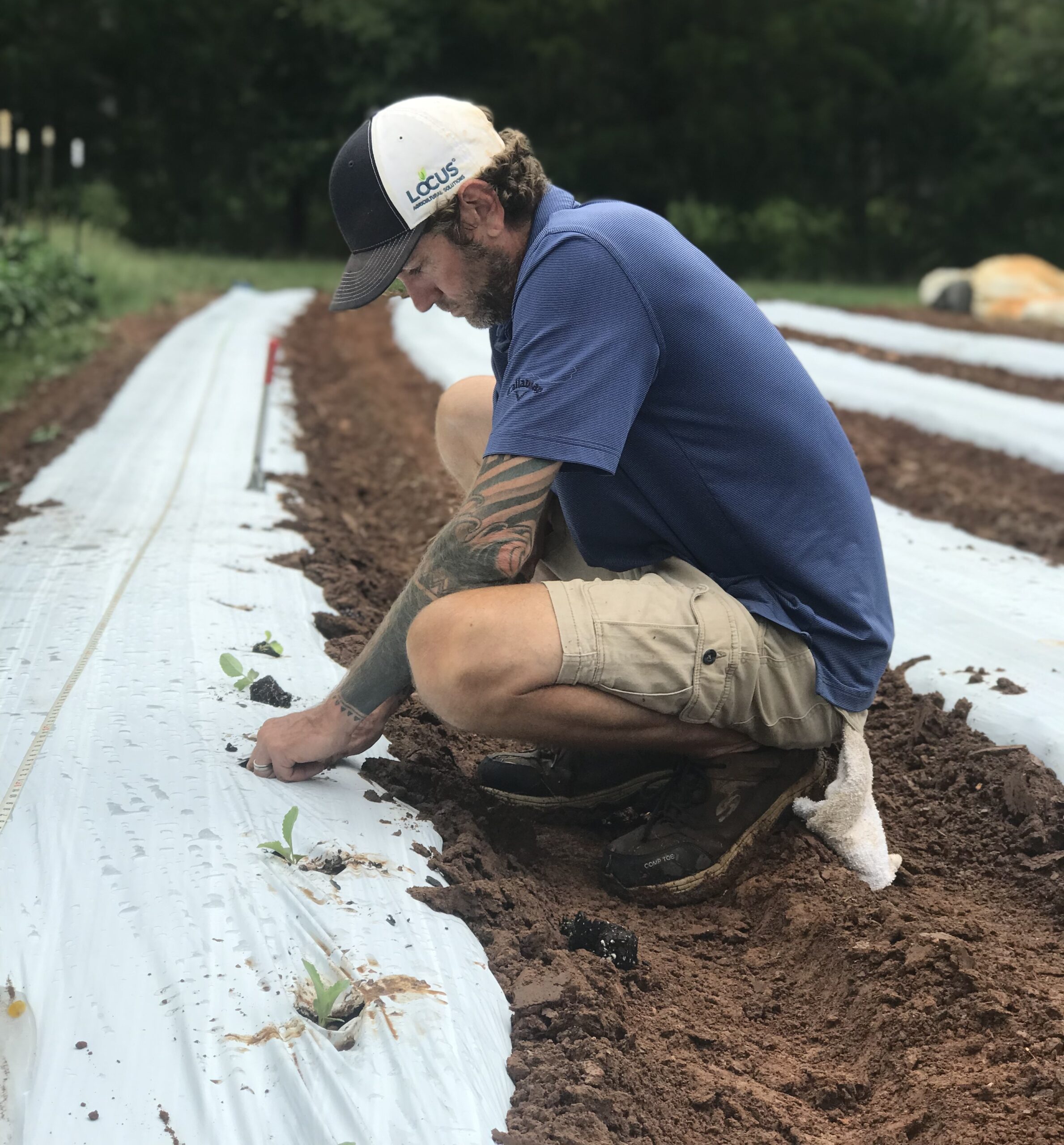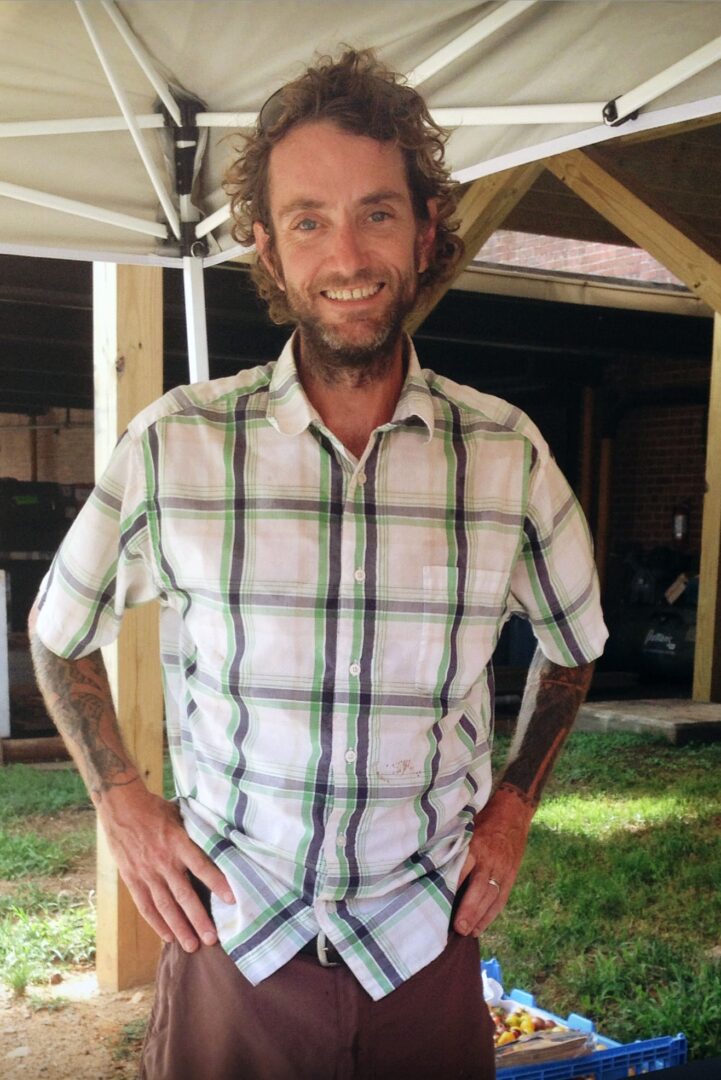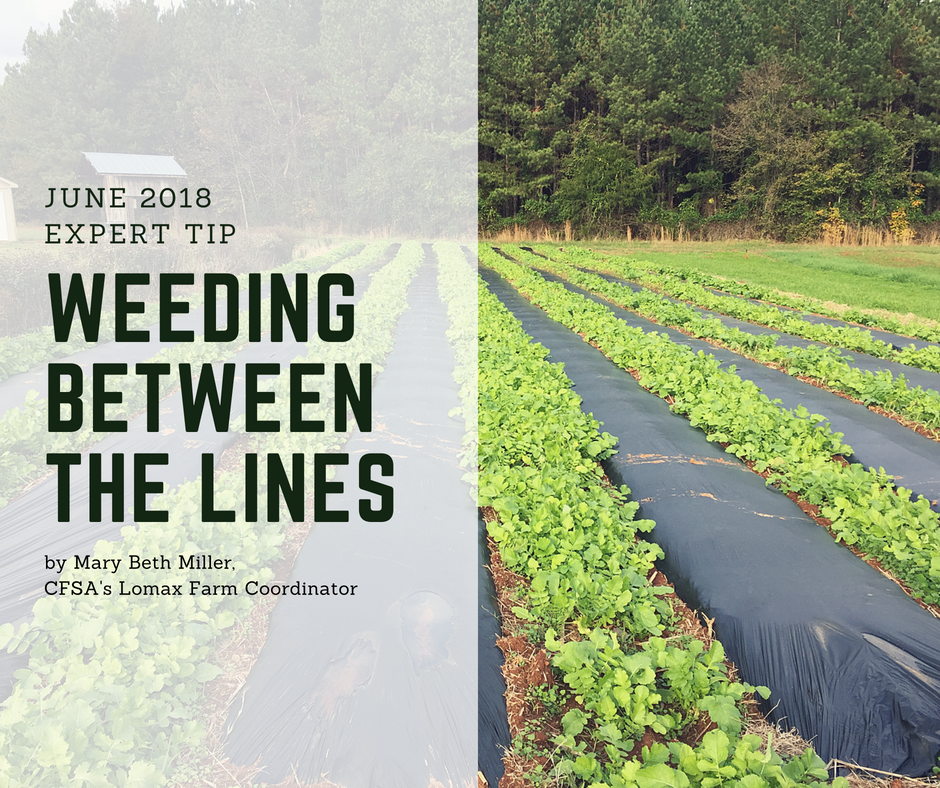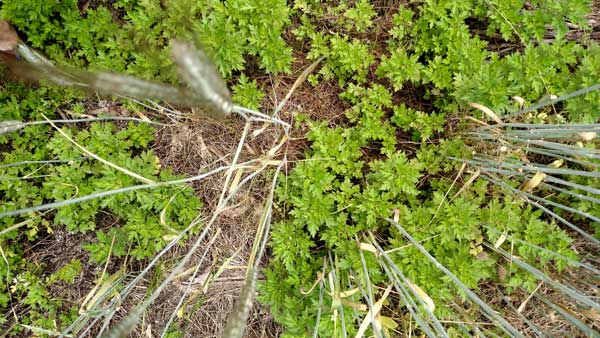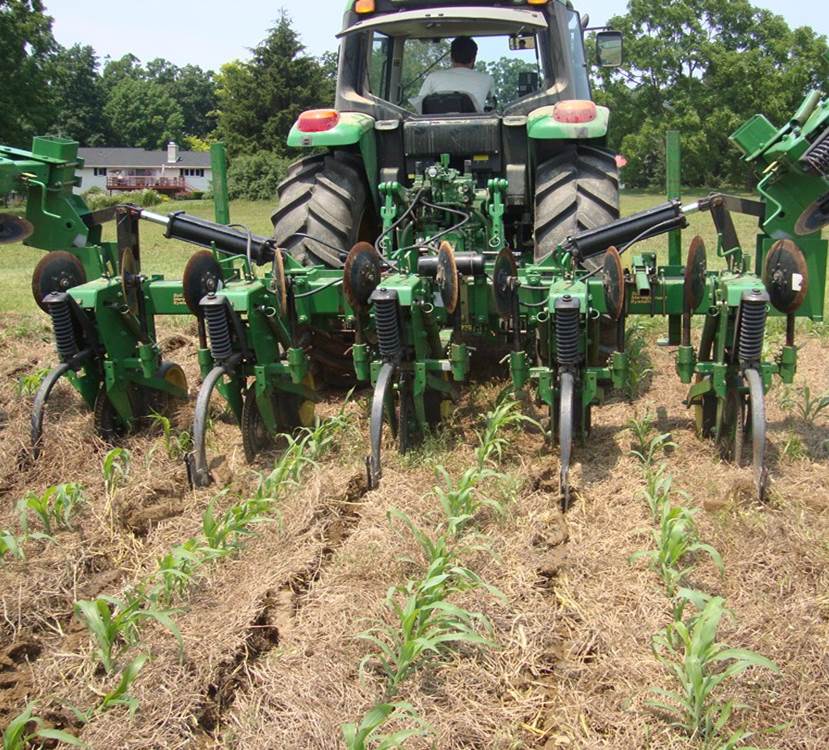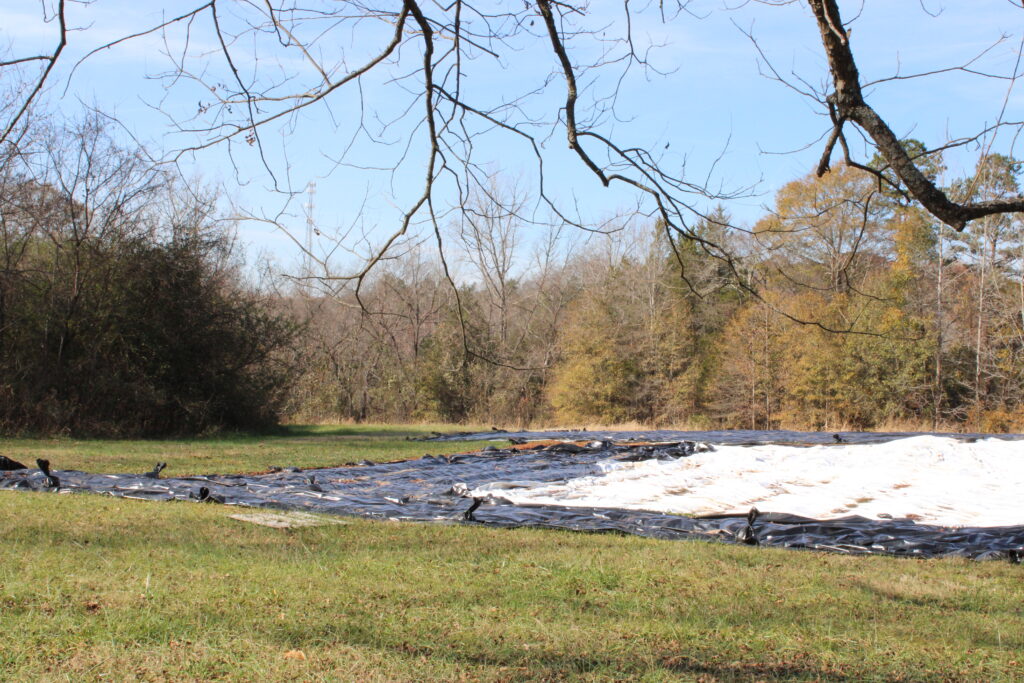
In organic farming, controlling weeds is one of the most challenging problems to overcome. Without herbicides, weeds can quickly take over your beautiful beds that have just been planted. Watching your plot that has just been planted and is spotless with no weeds quickly be overrun by them can be very disheartening to a farmer, especially when you’re new to growing vegetables. This is most problematic with direct-seeded crops, like root vegetables and baby greens. Vegetables like carrots that take longer to germinate can be especially frustrating.
One way to combat weeds taking over is by using silage tarps to create a stale seedbed. Silage tarps are UV-rated plastic tarps that are black on one side and white on the other. They come in various sizes and can be cut to cover any area. Cutting the tarps also makes them easier to manage; large ones can be pretty heavy with a bit of water on them. In this article, I will explain the process I use here at Lomax when direct seeding.
Bed Layout
The first step is to shape your beds. I use a raised bed system on the farm, but this also works on flat ground. You will want to prepare your beds as much in advance as possible so you will have time to allow weed seeds to germinate. After your beds are made, the next step is to get some water on the beds to start the germination process. If you have plenty of time before your planting date and cooperative weather, you can let the rain do this. If you are pressed for time, you can irrigate. I use drip irrigation on the farm, so I usually lay out my drip tape and soak the soil since the weather rarely cooperates with my plans.
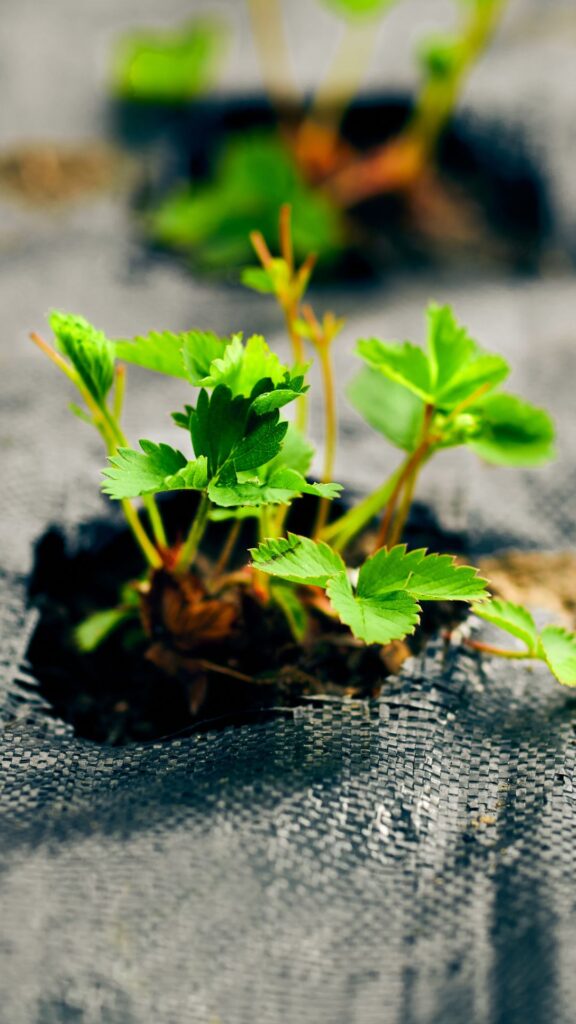
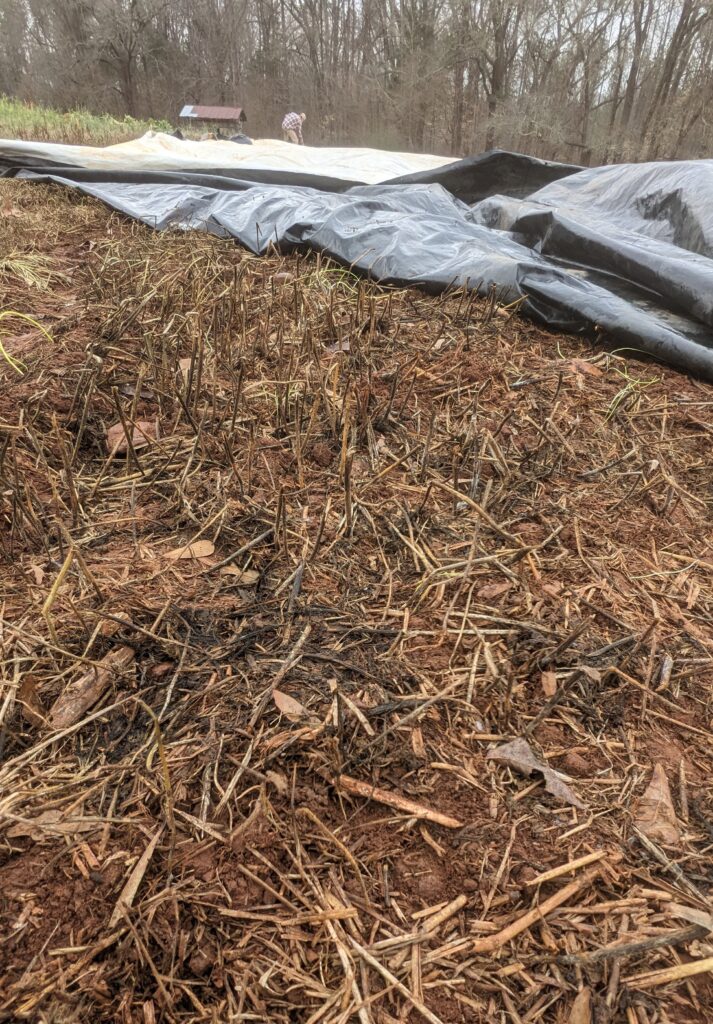
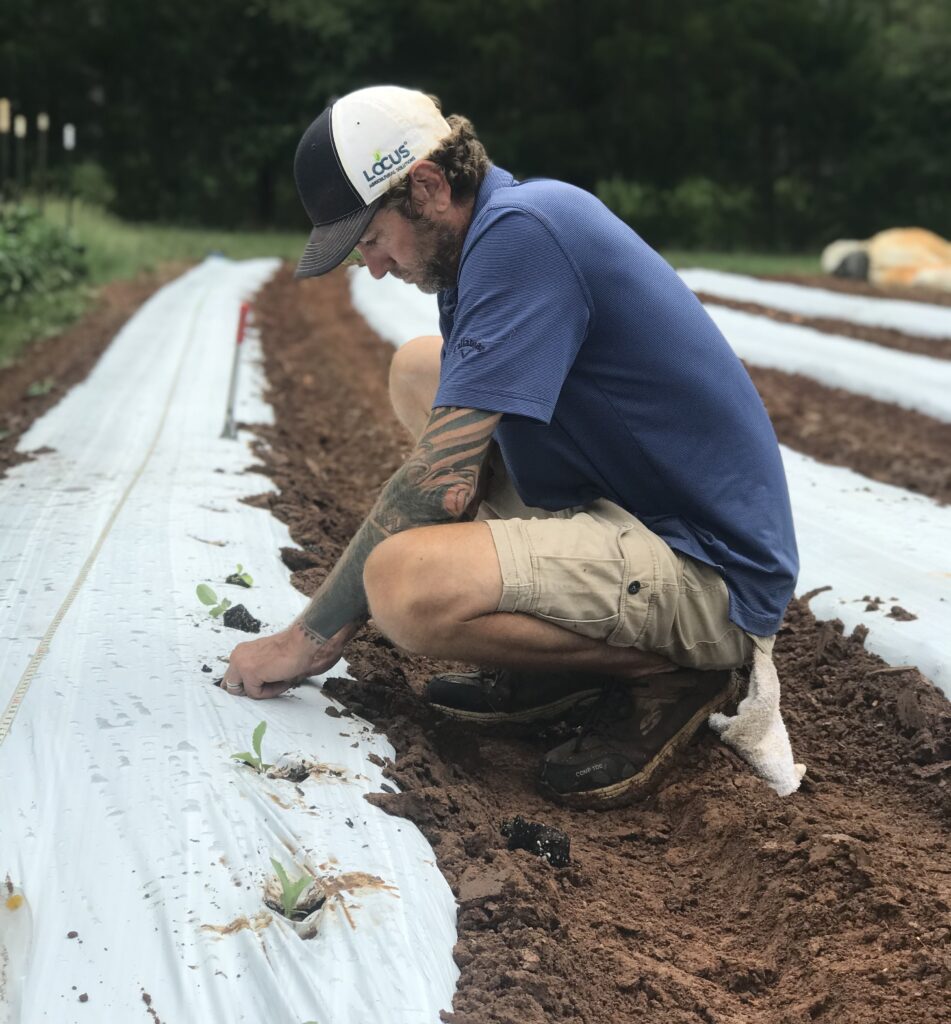
Germination
After a few days, you should start to see some germination. Once I see good germination, I will cover the area to be planted with a silage tarp held down with sandbags. You will want to cover the area after a few days and keep the weeds from growing too much. The bigger they grow, the longer it will take to kill them off under the tarp. You will want to repeat this process of covering and uncovering as many times as your planting schedule allows time.
The number of weeds you have and the temperature will also play into how often this is repeated. After repeating this several times, you should have relatively weed-free beds to sow. If you have ample time, you can then cover your beds until you are ready to plant. With the clay soil in my area, I like to prepare beds with this method in the fall for the following spring.
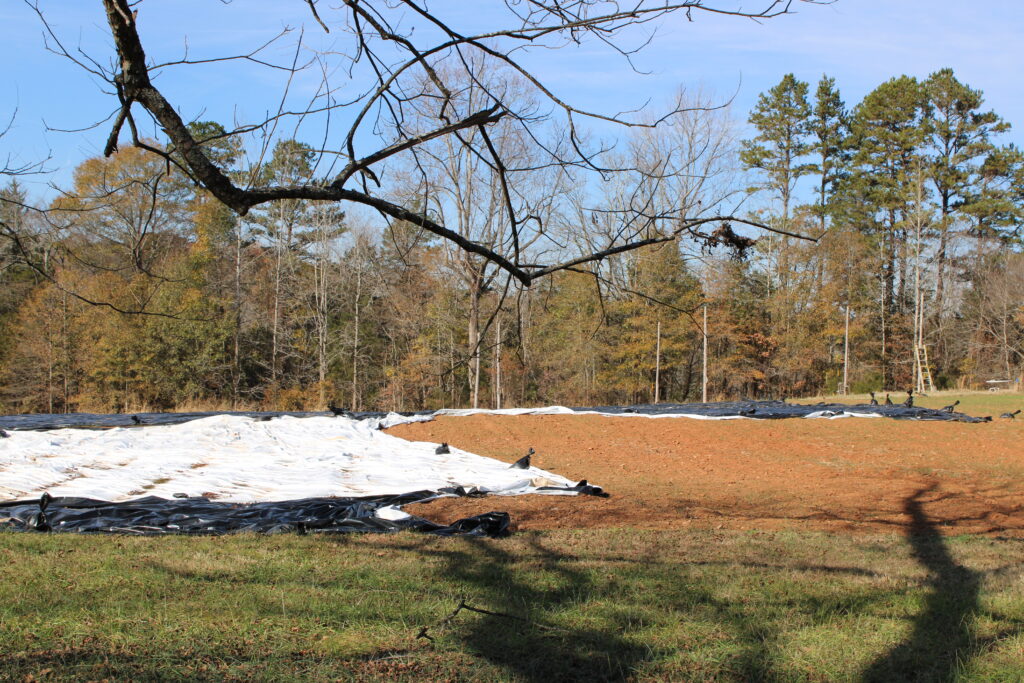
Occultation
There is also a method called occultation. This is when you leave the tarp in place and let the weeds germinate under the tarp and die off. If you have the time to cover ground for long periods, this may be a better solution. Moving the tarp on and off is more work, but I have found it necessary at Lomax Farm. There seems to be better weed seed germination when the ground is not covered.
Although it may not be perfect, and some weeds will still pop up, this method will give you a much cleaner start and allow your vegetables to get established without competing with weeds. It makes me smile to see a field of thriving vegetables not being choked out by weeds. I wouldn’t call myself an expert, but my words come from experience. Using tarps to help with weed control will save you countless hours of cultivation and much anxiety.
About the Author
Dylan Alexander is CFSA’s Lomax Farm Manager. He is responsible for land management, maintaining equipment, and assisting with Lomax’s research, education, and the FiT program. Dylan has extensive experience in seasonal organic vegetable production, hydroponics, indoor and outdoor mushroom production, and management on farms and in greenhouses and high tunnels.


